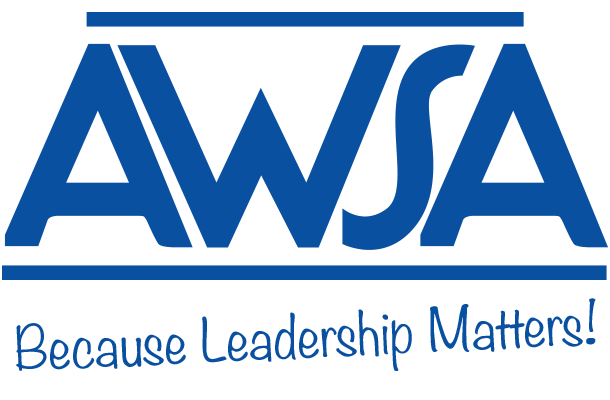Restorative Practices: The Key Actions of School Leaders for Effective ImplementationBy Dr. Amy L. Starzecki, District Administrator, Superior School District When I arrived in Superior in 2018, district discipline data showed a large number of students being suspended or expelled each year. We saw specific populations were being suspended or expelled disproportionately as compared to their peers. The use of suspension and expulsion resulted in loss of instructional time with students out of the classroom and was having a direct impact on student learning. As an administrative team, we wanted to better understand disciplinary actions that minimize a student’s time outside of the classroom and reduce future incidents. We brought “Restorative Practices” to our school district. As this journey was beginning for our district, I was also looking for a topic for my dissertation. In an effort to support our implementation of restorative practices, I decided to focus my dissertation on the specific actions of school principals to ensure effective implementation and sustainability of this new district initiative. As a former elementary and K-12 principal and current principal supervisor, I understand the critical role principals play in any school reform. I wanted to be able to look through the lens of research to best support our team. Here is what I learned. Why is there a need for schools to move away from exclusionary discipline practices as a primary strategy for student discipline? Suspension alone does not teach behavioral expectations. This practice does not necessarily ensure reduction of future incidents. This practice negatively impacts the relationships between students and staff. Schools that exhibit higher levels of exclusionary discipline can negatively affect ALL students, including non-suspended students. Frequent use of punishment creates highly punitive school environments and hinders the academic performance of all students. Research shows that students that experience more exclusionary discipline undergo more social isolation, mobility, increased retention, increased dropout rates, reduced achievement and graduation rates, and increased likelihood of becoming involved with the criminal justice system. Historically, there has been disproportionate use of exclusionary practices with students of color and students with disabilities. The concept of the achievement gap is a significant concern for many districts. However, there has been less attention paid to the disproportionate use of suspension and expulsion and its connection to the achievement gap. The U.S. Department of Education Office of Civil Rights (2016) suggests that disparities observed in the discipline data are not explained by more frequent or more serious misbehavior by students of color. Given the subjective nature of some student behaviors, this is potentially where discrimination and bias contribute to consequences being applied differently. Inequalities in arrests can be connected to inequalities in school discipline is also referred to as the “School-to-Prison Pipeline.” What is Restorative Practice? Restorative practice encompasses an approach that is non-punitive, relationship focused, addresses conflict, and promotes collaborative problem-solving among staff and students. Restorative practice can be viewed as a continuum of responses by staff to support students. Affective Statements: Affective statements are expressions of feelings by the teacher. When a teacher expresses their feelings, children become more empathetic. Affective questions: Affective questions elicit what the student was thinking and feeling (i.e., what did you think when you realized what had happened?). Small impromptu conferences: A small impromptu conference is an informal restorative practice that fosters awareness, empathy, and responsibility in a way to achieving social discipline. Groups or circles: Sitting in a circle helps everyone feel more connected. Circles can be used to check in/out, set classroom norms, and respond to significant behavior problems. Formal conferences: Formal conferences provide formal responses to misbehavior. The facilitator explores what happened, who was affected, and what needs to be done to make things right. For more information: International Institute for Restorative Practices (IIRP) https://www.iirp.edu. Why focus on the role of principals in school system change such as those seen in implementing restorative practices? As stated by former U.S. Education Secretary, Arne Duncan, “There’s no such thing as a high-performing school without a great principal. You simply can’t overstate their importance in driving student achievement.” Research concludes that leadership is second only to classroom instruction among school-related factors in influencing student learning. It is imperative that student discipline practices and policies are changed to better support students who have historically received discriminatory treatment in schools (i.e., students of color, students with disabilities, etc.). Changing school discipline policies and practices that have been embedded in our schools for decades require a system overhaul and will require highly effective school principals to lead and sustain the change. Research consistently shows that schools classified as successful possess strong school leadership. In fact, the importance of principal leadership can be considered one of the clearest findings of school effectiveness research. School principals are essential change agents who have significant influence on whether a school will be successful in adopting new school improvement initiatives as well as fostering a reflective staff culture towards continuous improvement. What does research say are the key actions of school leaders for effective implementation of restorative practices? Four research findings rose to the top as most important for principals to ensure effective implementation of restorative practice. PROVIDE ONGOING AND SUSTAINED PROFESSIONAL DEVELOPMENT
ESTABLISH STAFF BUY-IN AND TRUST PRIOR TO IMPLEMENTATION
MODEL, MODEL, MODEL
CREATE A VISION FOR THE WORK
In summary, as you reflect on these key strategies for effective implementation of restorative practices in schools, you can see these concepts carry over to any system change we implement as school leaders. Understanding the science for school improvement efforts will help ensure your initiatives are successful and improve student outcomes. Leadership matters. It matters every day. Thank you to all the school leaders across Wisconsin for all you do to support staff, students and families. You make a difference! |
